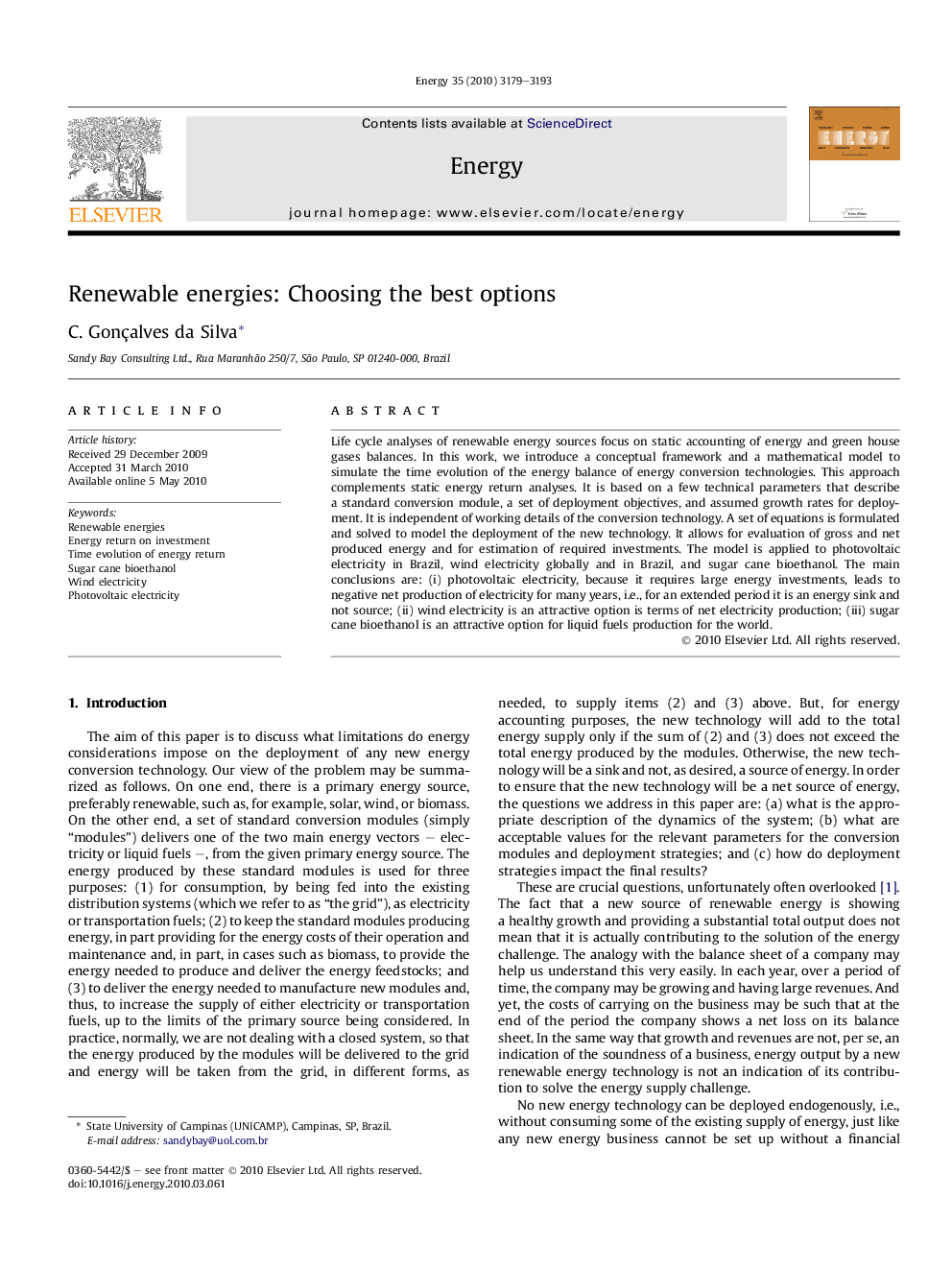| Article ID | Journal | Published Year | Pages | File Type |
|---|---|---|---|---|
| 1734981 | Energy | 2010 | 15 Pages |
Life cycle analyses of renewable energy sources focus on static accounting of energy and green house gases balances. In this work, we introduce a conceptual framework and a mathematical model to simulate the time evolution of the energy balance of energy conversion technologies. This approach complements static energy return analyses. It is based on a few technical parameters that describe a standard conversion module, a set of deployment objectives, and assumed growth rates for deployment. It is independent of working details of the conversion technology. A set of equations is formulated and solved to model the deployment of the new technology. It allows for evaluation of gross and net produced energy and for estimation of required investments. The model is applied to photovoltaic electricity in Brazil, wind electricity globally and in Brazil, and sugar cane bioethanol. The main conclusions are: (i) photovoltaic electricity, because it requires large energy investments, leads to negative net production of electricity for many years, i.e., for an extended period it is an energy sink and not source; (ii) wind electricity is an attractive option is terms of net electricity production; (iii) sugar cane bioethanol is an attractive option for liquid fuels production for the world.
